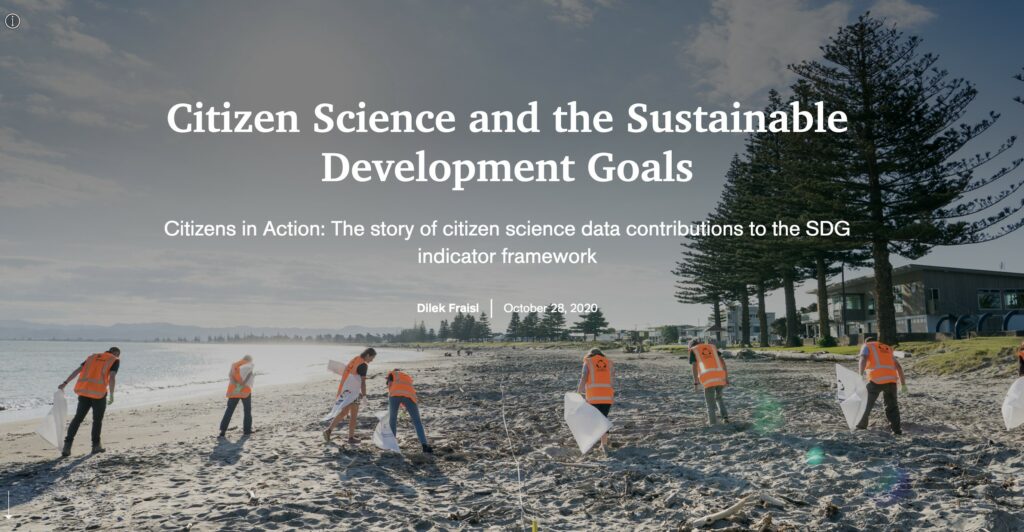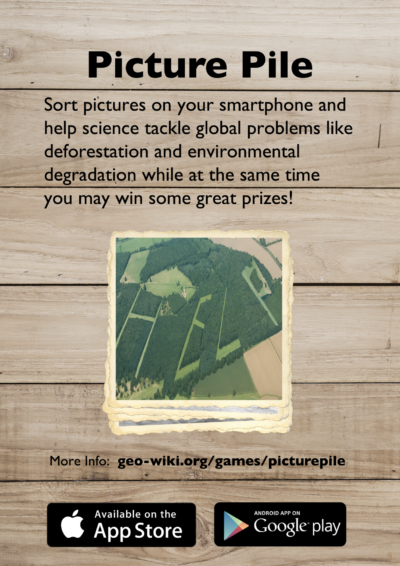Why is it relevant?
Achieving the UN Sustainable Development Goals (SDGs) requires accurate, timely and comprehensive data in order to make informed decisions and improve people’s lives. However, there are major gaps in the data and knowledge that feed into policy and practice for achieving the SDGs and impact. Fortunately, there are many Citizen Observatories and citizen science initiatives that could match these data needs. It is therefore important that your Citizen Observatory become aware of the SDG data needs and how you can contribute to these goals.
How can this be addressed?
To address these data gaps and needs, we need to unlock the potential of Citizen Observatory and citizen science data, and integrate them into the official statistics for SDG monitoring. Citizen science and Citizen Observatories can complement traditional sources of data, enable active citizen involvement in the SDG processes and ensure government accountability. Therefore, they have strong potential to leverage the SDGs as an active agent and monitor of change.
As Citizen Observatory project leaders and community managers, you can do the following things to realise the full potential of Citizen Observatories and citizen science for SDG monitoring:
- Clearly indicate and promote which SDG indicator(s) your Citizen Observatory aims to contribute to (e.g. on your website, apps, social media accounts);
- Communicate which data quality assurance procedures you are using to comply with the quality standards and requirements of the National Statistical Offices (NSOs) and other government and UN agencies;
- Support open data for your Citizen Observatories that are formatted using standards, e.g., a new data and metadata standard for Public Participation in Scientific Research (PPSR);
- Approach the NSOs and other relevant national and international organisations if you are just designing your Citizen Observatory (find out more here and here);
- Develop your use case(s) and demonstrate successful results, e.g., where your data have been used in innovative ways, particularly by NSOs and/or UN agencies;
- Build awareness and share experiences with other initiatives on the use of their Citizen Observatory for the SDGs;
- Make the case for integrating citizen science and Citizen Observatory data into the methodologies of SDG indicators;
- Promote consistent data collection across Citizen Observatory and citizen science initiatives;
- Sustain your Citizen Observatory through innovative funding schemes to ensure continued contribution to the SDGs; and
- Join like-minded practitioners and groups to share experiences and learn from each other, such as through the WeObserve SDGs and Citizen Observatories Community of Practice (SDGs CoP).
Storymap on the contributions of citizen science data to SDG Monitoring
According to a systematic review undertaken by the WeObserve SDGs CoP, citizen science and Citizen Observatory data are already contributing and could potentially contribute to 33% of the SDG indicators. Their greatest contributions to the SDG framework would be to SDG 15 Life on Land, SDG 11 Sustainable Cities and Communities, SDG 3 Good Health and Wellbeing, and SDG 6 Clean Water and Sanitation. This also demonstrates that citizen science and Citizen Observatory data have the greatest potential for input to the environmental SDG indicators, 68% of which lack data according to UNEP.
Example by the Picture Pile initiative
A good example of a potential contribution of citizen science and Citizen Observatories to SDG monitoring is the Picture Pile initiative. Picture Pile is a generic and flexible tool for ingesting imagery that can be rapidly classified by volunteers, such as very high-resolution satellite images or geotagged photographs. Picture Pile combines Earth Observation and citizen science and Citizen Observatory approaches that could be used for monitoring various SDG indicators, such as 1.5.2 Direct economic loss attributed to disasters in relation to global gross domestic product (GDP), 11.3.1 Ratio of land consumption rate to population growth rate and 14.1.1b Floating plastic debris density, among others.
For the uptake of the Picture Pile tool and data for SDG monitoring and reporting purposes, the project team has been working on demonstrating the value, methodology and results of Picture Pile to the data and statistics communities. To achieve that, they first identified the SDG indicators that could potentially be supported by Picture Pile and studied their methodologies. They then contacted the respective custodian agencies that are responsible for compiling and reporting SDG data at a global level to understand how the current Picture Pile methodology can be improved to match the data gaps and needs at the indicator level. This is still a work in progress. The team is well aware that such changes need time and effort to be applied in practice, as this requires not only technical adaptation and increased capacities, but also a mindshift. The team also plans to work with countries to enable the use of Picture Pile data at the national level to develop use cases and best practices that could set an example for other countries and NSOs.
Lessons learned from the Citizen Science for the SDGs (CS4SDGs) – Ghana project
Led by IIASA, the CS4SDGs – Ghana project (2020-2021) is a partnership between the UNSDSN, UNEP, Ghana Statistical Service (GSS), Ghana Environmental Protection Agency (EPA), Earth Challenge, Wilson Center, Ocean Conservancy, Smart Nature Freaks Youth Volunteer Foundation and others. The aim of the project is to act on the results of the WeObserve SDGs CoP paper, and use citizen science approaches for Ghana’s official SDG monitoring/reporting activities based on the country’s policy priorities and data needs. As part of the project, the SDG indicator 14.1.1b on plastic debris density was identified to support Ghana for understanding the extent of the marine litter issue in the country using citizen science methodology and approaches. Some of learnings so far include:
- Building key partnerships around citizen science and Citizen Observatory data is key to their successful uptake for SDG monitoring and impact;
- Instead of creating new initiatives from scratch, leveraging existing citizen science and Citizen Observatory initiatives serves to achieve more time- and resource-efficient results;
- By tapping into local networks, in this case “Smart Nature Freaks Youth Volunteers”, data can be efficiently and sustainably collected as a by-product of existing activities; and
- Creating time and space for government, international organisations, CSOs, universities and others to meet is essential, in order to build trust, common goals and ownership over the results.
Useful Resources
VIDEO: Social/policy impact of citizen science & observatories shows how citizen science can help to fill data gaps, inform policies, increase awareness and promote behavioural change.
SCIENTIFIC PAPER: “Mapping citizen science contributions to the UN Sustainable Development Goals” presents an overview of where citizen science is already contributing and could contribute data to the SDG indicator framework.
SCIENTIFIC PAPER: “Citizen science and the United Nations Sustainable Development Goals” presents a roadmap that outlines how citizen science can be integrated into the formal Sustainable Development Goals reporting mechanisms as an emerging example of a non-traditional data source that is already making a contribution to measure SDGs.
SCIENTIFIC PAPER: “The role of combining national official statistics with global monitoring to close the data gaps in the environmental SDGs” summarises how the environmental dimensions of the SDGS are being measured.
SCIENTIFIC PAPER: “Local Action with Global Impact: The Case of the GROW Observatory and the Sustainable Development Goals” reports on Citizen Observatories’ potential to contribute to the Sustainable Development Goals, reflecting on the experience of the GROW Observatory.
CONFERENCE PAPER: “Citizen Science Data Integration for Understanding Marine Litter” analyses how citizen science and complementary activities not only provide a cost-effective mechanism for collecting data, but also provide an opportunity to increase awareness and action on issues relating to marine litter.
PROJECT REPORT: The WeObserve report “D4.6 WO Monitoring of SDGs by COs. Recommendations and priorities” includes an overview of the contributions of Citizen Observatories and citizen science to SDG monitoring. This is done through a mapping of current and recent Citizen Observatory / citizen science activities onto SDG indicators and targets to identify where and how they can support SDG monitoring and implementation efforts. The report also provides recommendations and priorities regarding how to bring Citizen Observatory and citizen science data into official statistics for SDG monitoring.
You may also be interested in:
I want to achieve impact with the Citizen Observatory results…
…by communicating the Citizen Observatory results effectively
This work by parties of the WeObserve consortium is licensed under a Creative Commons Attribution-ShareAlike 4.0 International License. ![]()


